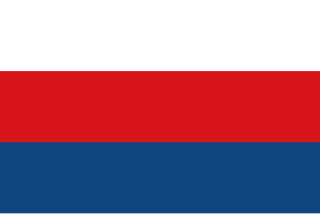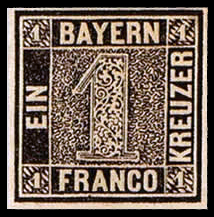
Czechoslovakia, was a sovereign state in Central Europe, created in 1918, when it declared its independence from Austria-Hungary. In 1938, after the Munich Agreement, the Sudetenland became part of Germany, while the country lost further territories to Hungary and Poland. Between 1939 and 1945 the state ceased to exist, as Slovakia proclaimed its independence and the remaining territories in the east became part of Hungary, while in the remainder of the Czech Lands the German Protectorate of Bohemia and Moravia was proclaimed. In 1939, after the outbreak of World War II, former Czechoslovak President Edvard Beneš formed a government-in-exile and sought recognition from the Allies.

Moravia is a historical region in the east of the Czech Republic and one of three historical Czech lands, with Bohemia and Czech Silesia.

The Czech lands or the Bohemian lands are the three historical regions of Bohemia, Moravia, and Czech Silesia. Together the three have formed the Czech part of Czechoslovakia since 1918, the Czech Socialist Republic since 1 January 1969 and the Czech Republic since 1 January 1993. The Czech lands are also referred to as Czechia.

The Protectorate of Bohemia and Moravia was a partially annexed territory of Nazi Germany established on 16 March 1939 following the German occupation of the Czech lands. The protectorate's population was mostly ethnic Czech.

The Bohemian and Moravian koruna, known as the Protectorate crown, was the currency of the Protectorate of Bohemia and Moravia between 1939 and 1945. It was subdivided into 100 haléřů.

The coat of arms of Czechoslovakia were changed many times during Czechoslovakia’s history, some alongside each other. This reflects the turbulent history of the country and a wish to use appropriate territorial coats of arms.

Czechoslovak State Railways was the state-owned railway company of Czechoslovakia.

The First Czechoslovak Republic, often colloquially referred to as the First Republic, was the first Czechoslovak state that existed from 1918 to 1938, a union of ethnic Czechs and Slovaks. The country was commonly called Czechoslovakia, a compound of Czech and Slovak; which gradually became the most widely used name for its successor states. It was composed of former territories of Austria-Hungary, inheriting different systems of administration from the formerly Austrian and Hungarian territories.

The Second Czechoslovak Republic existed for 169 days, between 30 September 1938 and 15 March 1939. It was composed of Bohemia, Moravia, Silesia and the autonomous regions of Slovakia and Subcarpathian Rus', the latter being renamed Carpathian Ukraine on 30 December 1938.

This is a survey of the postage stamps and postal history of Germany and philatelically related areas. The main modern providers of service were the Reichspost (1871–1945), the Deutsche Post under Allied control (1945–1949), the Deutsche Post of the GDR (1949–1990), the Deutsche Bundespost (1949–1995), along with the Deutsche Bundespost Berlin (1949–1990), and are now the Deutsche Post AG.

Resistance to the German occupation of the Protectorate of Bohemia and Moravia during World War II began after the occupation of the rest of Czechoslovakia and the formation of the protectorate on 15 March 1939. German policy deterred acts of resistance and annihilated organizations of resistance. In the early days of the war, the Czech population participated in boycotts of public transport and large-scale demonstrations. Later on, armed communist partisan groups participated in sabotage and skirmishes with German police forces. The most well-known act of resistance was the assassination of Reinhard Heydrich. Resistance culminated in the so-called Prague uprising of May 1945; with Allied armies approaching, about 30,000 Czechs seized weapons. Four days of bloody street fighting ensued before the Soviet Red Army entered the nearly liberated city.
The 1940–41 Národní liga was the second season of the Národní liga, the first tier of league football in the Nazi Germany-annexed Protectorate of Bohemia and Moravia which had been part of Czechoslovakia until March 1939.
The 1942–43 Národní liga was the fourth season of the Národní liga, the first tier of league football in the Nazi Germany-annexed Protectorate of Bohemia and Moravia which had been part of Czechoslovakia until March 1939.
Admirals are a series of definitive stamps issued by three countries of the British Commonwealth that show King George V of Great Britain and the British Dominions. The stamps are referred to as the Admirals because King George is depicted in his Admiral of the Fleet uniform. The stamps were issued by Canada in 1911–1928, New Zealand in 1926, and Rhodesia in 1913–24.
Society for Czechoslovak Philately (SCP) is a philatelic organization dedicated to the collection and study of the postage stamps and postal history of Czechoslovakia, the Czech Republic and Slovakia.

This is a survey of the postage stamps and postal history of Slovakia.

This is a survey of the postage stamps and postal history of the Czech Republic.

This is a survey of the postage stamps and postal history of Ukraine.

The Holocaust in Bohemia and Moravia: Czech Initiatives, German Policies, Jewish Responses is a book by the German historian Wolf Gruner on the Holocaust in Bohemia and Moravia, the Czech-majority parts of Czechoslovakia partially annexed into Nazi Germany during the German occupation of Czechoslovakia. Beginning before the Munich Agreement, Gruner's book covers the various stages of persecution of Jews which led to their deportation and murder. He argues that the role of Czech collaboration and local initiatives was greater than has been conventionally assumed, and also that Jewish resistance to persecution was substantial. The book has received mixed reviews; some Czech historians have disagreed with Gruner's conclusions while other reviewers generally praised the book with some reservations. The book was published in German in 2016 and in English and Czech in 2019. It received the 2017 Sybil Halpern Milton Memorial Book Prize of the German Studies Association.

Pestrý týden was a Czech illustrated weekly magazine published November 2, 1926 to April 28, 1945, during the First and Second Czechoslovak Republics and during the Protectorate of Bohemia and Moravia. It helped establish top photo-reporters of the 1930s, such as Karel Hájek, Václav Jírů and Ladislav Sitenský. Published and printed by Grafické závody by Václav Neubert and Sons, based in Smí



















